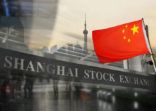Ricky Tang, Schroder Investment Management
The $7bn Schroder Asian Asset Income Fund has made several adjustments to its equity/bond mix during the past two weeks, according to Ricky Tang, deputy head of multi-asset product in North Asia at Schroder Investment Management.
Cash was raised to 10% of the total fund, and the fund hedged over 20% of its Asian currency exposure. Now 85% of the fund’s assets are directly in or hedged in, US dollars and Hong Kong dollars, compared with 65% two weeks ago.
“Maintaining quite a high level of cash in the fund makes sense in distressed market conditions, when all asset classes are so closely correlated,” Tang told FSA.
Mixed-asset funds have grown in popularity in Asia-Pacific in recent years.
Their AUM in the region increased at a five-year compound annual growth rate of 8.2%, taking the total to $726bn at the end of 2019, compared with $489bn at the start of 2015, according to a report this month by Broadridge Financial, a US-based data and analytics firm.
Nevertheless, mixed-asset funds have struggled to match the long-term returns of equity funds, and compete with high yield bonds funds to offer compelling levels of income.
The Schroder fund’s three-year cumulative return to the end of 2019 was 20.26%, according to FE Fundinfo data.
However, the March sell-off across financial markets has dragged its three-year return down to -6.79%, compared with -1.48% for the sector average.
Tang is aware that some mixed-asset funds are using VIX derivatives they already held to hedge their volatility, but pointed out that they are now too expensive to buy.
Instead, he and his portfolio managers are trying to mitigate downside risks in other ways, in addition to raising the fund’s cash level.
Equity exposure reduced
At the end of February, the fund was still overweight equities, which had held up quite well despite an increase in volatility as attention remained focused on the impact of the coronavirus in China, according to Tang.
“However, the excessive volatility in March had a major effect on all equities. Even the defensive sectors, such as telecoms, property and utilities, which comprised most of the fund’s equity allocation, weren’t spared,” he said.
The managers reduced the equity portfolio to about 48% of the fund, lower than its typical 56% weighting.
Nevertheless, the underlying portfolio managers are looking for opportunities among their normal universe of equities in developed Asia-Pacific, such as Australia, Hong Kong and Singapore.
China and Hong Kong stocks have held up better than other geographies due to perceptions that the spread of the virus had stabilised in the those territories. Among sectors, online services and e-commerce have performed relatively well, as housebound workers and consumers have relied on the internet to make purchases and seek entertainment.
“We are seeking companies that can stay liquid and solvent, with financial strength and solid balance sheets,” said Tang.
The managers also retain their faith in the “structural growth” premise underling many sectors in the region, and are attracted by the low valuations of some traditionally high dividend payers — although their enthusiasm is necessarily tempered by the prospect of lower earnings.
Lowering credit risk
The fund also began reducing its credit exposure in late February and early March. Its allocation to high yield bonds was cut to 9% from 11%, with the rest of its 35% credit portfolio now in investment grade bonds.
“The credit portfolio has always had a tilt towards investment grade anyway,” Tang emphasised.
Holdings in long duration US government bonds helped performance in February, as the 10-year US Treasury rallied strongly. But, volatility subsequently afflicted even safe haven asset markets, and the manager shortened duration.
“Duration has worked well for the fund, but we need to be active and constantly prepared to make adjustments rather than expect successful strategies to continue to perform,” said Tang.
“On the other hand, we are comfortable buying some short duration sub-investment grade bonds, including in the property sector, with elevated yields,” he added.
In general, the bond portfolio managers prefer Asia credit to US credit, not least because regional governments are being supportive of the corporate sector.
Their view is shared by several bond fund managers who spoke to FSA earlier this month, highlighting cheap relative valuations, structural market features and regional policy actions as factors supporting Asian corporate bonds.
Demand for income
The Schroder fund’s income distribution rate is variable, but the yield is historically around 4.5%, according to Tang.
“Corporate earnings and dividend payouts are likely to be hurt by the crisis, which might temporarily affect the yield on the fund, especially because we will not sacrifice quality through chasing income from either equity or bond issues that are vulnerable,” he said.
Some asset managers have planned ahead for demand in Asia by launching income-generating mixed-asset portfolios in Singapore that have Reits as a key component. Allianz Global Investors is the latest to register a fund with Monetary Authority of Singapore.
Tang agrees that preparation for a healthier market environment makes sense.
“There are a lot of negative headlines, but investors need to take a step back and gain a longer-term perspective,” he said.
“The Covid-19 pandemic will eventually recede, and there will be a time to bargain-hunt for assets at very low valuations.”
“Moreover, there will be a resurgence of demand for income in an environment of low or negative interest rates,” he said.
Schroder Asian Asset Income Fund vs sector average


















